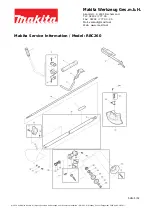
8
Document Number
DCV-00470
Date Released
Jul. 2020
Revision Number/Security level
R03 S2
Retrofit G6-300 + InvencoLink Wayne Vista 3V (US) Installation Guide
3.1.1 No Open Flames
Open flames from matches, lighters, welding torches or other sources can ignite fuels and
their vapors.
3.1.2 No Sparks - No Smoking
Sparks from starting vehicles, starting or using power tools, burning cigarettes, cigars or
pipes can also ignite fuels and their vapour. Static electricity, including an electrostatic
charge on your body, can cause a spark sufficient to ignite fuels and their vapors. After
getting out of a vehicle, touch the metal of your vehicle to discharge any electrostatic
charge before you approach the dispenser island.
3.1.3 Working Alone
It is highly recommended that someone who is capable of rendering first aid be present during servicing.
Be familiar with Cardiopulmonary Resuscitation (CPR) methods if you are working with or around high
voltages. This information is available from the First Aid training providers. Always advise the station
personnel about where you will be working, and caution them not to activate power while you are working
on the equipment. Use the OSHA Tag-out/Lockout procedures. If you are not familiar with this
requirement, refer to information in the relevant manual and OSHA documentation.
3.1.4 Working with Electricity Safety
Ensure that you use safe and established practices in working with electrical devices. Poorly wired
devices may cause a fire, explosion or electrical shock. Ensure that grounding connections are properly
made. Take care that sealing devices and compounds are in place. Ensure that you do not pinch wires
when replacing covers. Follow OSHA Tag-out/Lockout requirements. Station employees and service
contractors need to understand and comply with this program completely to ensure safety while
equipment is down.
Follow all applicable requirements in NFPA 30, 30A and 70, and those of the Local Authority Having
Jurisdiction for electrical wiring.
3.1.5 Hazardous Materials
Some materials present inside electronic enclosures may present a health hazard if not handled correctly.
Be sure to clean hands after handling equipment. Do not place any equipment in mouth.
3.1.6 In an Emergency
Compile the following information in case of emergency:
•
Location of accident (e.g. address, front/back of building, etc).
•
Nature of accident (e.g. possible heart attack, struck by a vehicle, burns, etc).
•
Age of victim (e.g. baby, teenager, middle-age, elderly).
•
Whether or not victim has received first aid (e.g. stopped bleeding by application of pressure etc).
•
Whether or not victim has vomited (e.g. if swallowed or inhaled something etc).










































